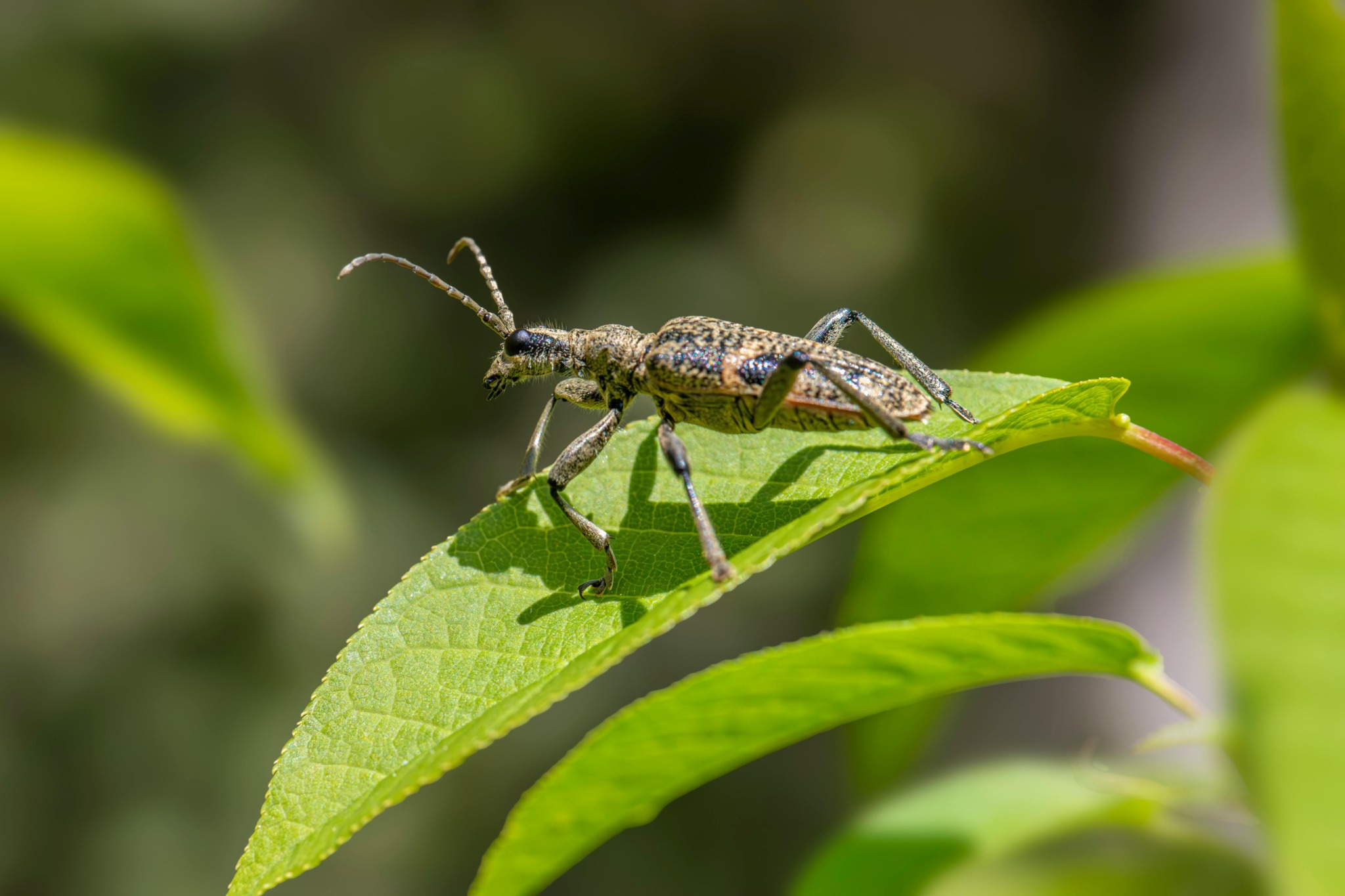Here’s a detailed natural history overview of the Black-spotted Longhorn Beetle (Rhagium mordax), a striking longhorn species often found in European woodlands:
Black-spotted Longhorn Beetle (Rhagium mordax)
Taxonomy & Classification
- Kingdom: Animalia
- Phylum: Arthropoda
- Class: Insecta
- Order: Coleoptera
- Family: Cerambycidae (Longhorn beetles)
- Subfamily: Lepturinae
- Genus: Rhagium
- Species: R. mordax
General Description
- Size: 10–22 mm in length.
- Body: Elongated and robust.
- Coloration:
- Elytra (wing covers) are brownish or grayish with four irregular black spots on each.
- Pronotum is rough and marked, sometimes with darker patterns.
- Antennae relatively long but shorter than body length.
- Distinctive features: The spotted elytra pattern makes it easy to distinguish from similar Rhagium species, such as Rhagium inquisitor.
Behavior & Lifestyle
- Activity period: Adults are active in late spring to midsummer (May–July).
- Diurnal: Seen on logs, tree trunks, and flowers during the day.
- Flight: Capable of strong flight; often encountered in forest clearings.
Diet
- Adults: Feed on nectar, pollen, and sometimes tree sap.
- Larvae: Wood-borers that develop in decaying or recently dead coniferous trees, especially spruce and pine.
Life Cycle
- Eggs: Laid in crevices of bark or in decaying wood.
- Larvae: Bore into the wood, creating wide tunnels as they feed on the inner layers.
- Development time: Usually 2–3 years in colder regions.
- Pupation: Occurs inside the wood, followed by emergence of the adult beetle in spring.
Habitat
- Mixed and coniferous forests.
- Commonly associated with pine, spruce, and fir, though occasionally found in deciduous wood.
- Adults often seen basking on tree trunks, logs, and fallen timber.
Geographic Range
- Widespread across Europe and parts of western Asia.
- Particularly abundant in boreal and temperate forests.
Ecological Role
- Decomposer: Larvae contribute to the breakdown of dead wood, recycling nutrients into the ecosystem.
- Pollinator: Adults visiting flowers may assist in pollination.
- Prey species: Birds, parasitic wasps, and small mammals feed on both larvae and adults.
Similar Species
- Rhagium inquisitor (Lesser-spotted longhorn): Smaller, with finer markings.
- Rhagium bifasciatum (Two-banded longhorn): Has yellowish cross-bands instead of irregular black spots.
Conservation Status
- IUCN Red List: Not globally assessed; considered locally common and widespread.
- Threats:
- Loss of old-growth and decaying wood habitats due to forestry practices.
- Removal of fallen logs and deadwood from forests.
- Conservation importance: Protecting deadwood habitats supports this and many other saproxylic (wood-dependent) insects.
Interesting Facts
- One of the first longhorn beetles to appear in spring, often spotted on sunny days in May.
- Larval tunnels of R. mordax can help other insects and fungi colonize dead wood.
- Despite being a longhorn beetle, its antennae are not as exaggeratedly long as in many tropical relatives.
Visited 880 times, 5 visit(s) today
Views: 1216
Subscribe to the newsletter:
